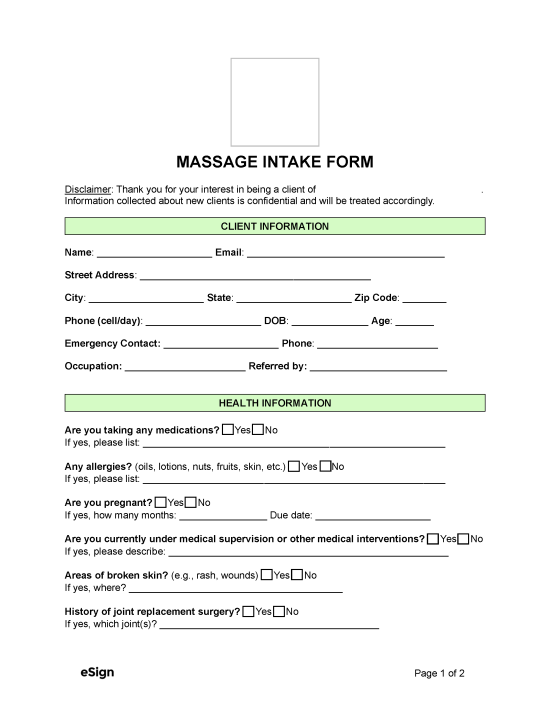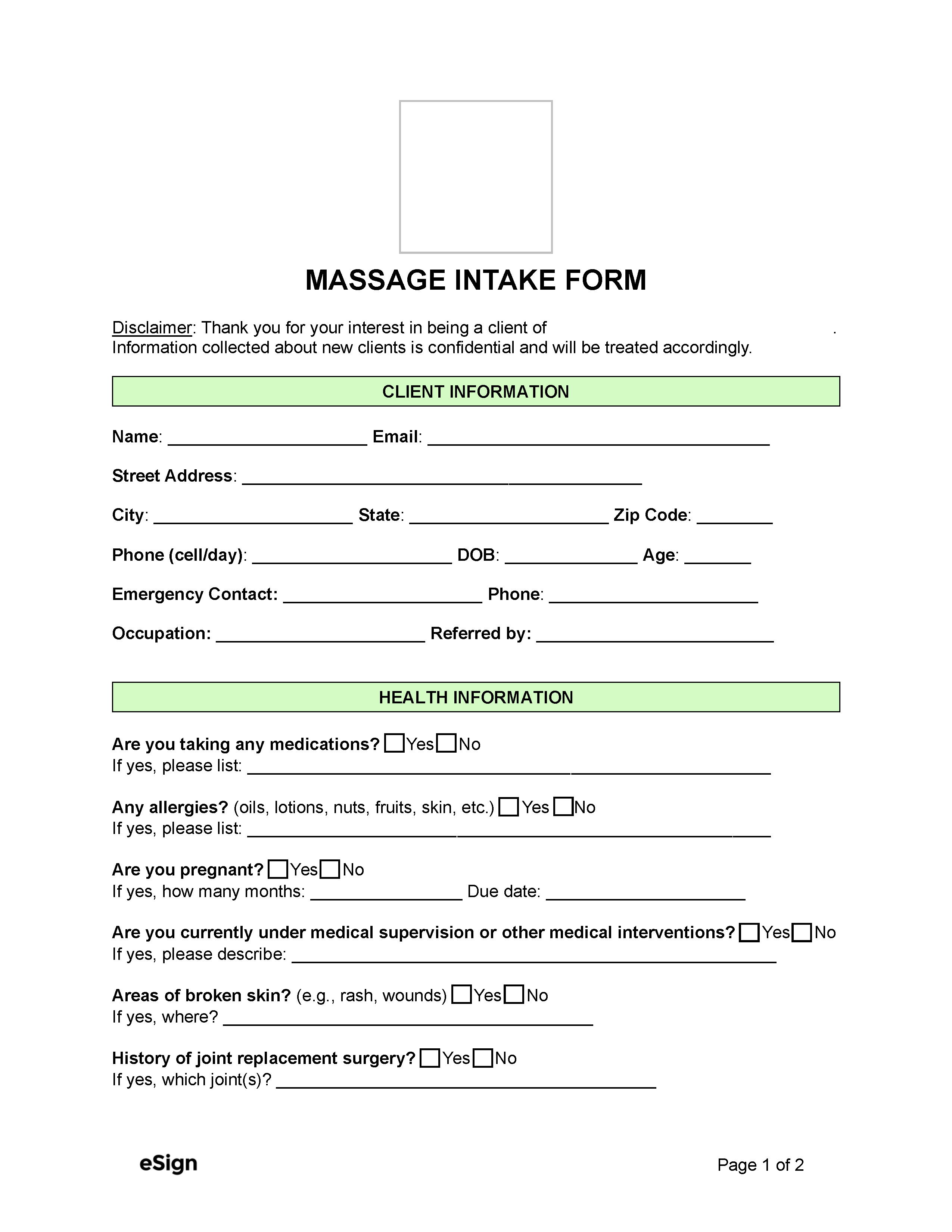Key Components
1. Client Information – This section will request the client’s basic information, such as their name, address, phone number, email address, and emergency contact.
2. Health Information – The client will need to disclose any past and present health issues. These could include surgeries, injuries, chronic conditions, allergies, medications, or any other condition that may put them at risk. Based on the health information provided by the client, the therapist will adapt the treatment to ensure the client’s safety and well-being.
3. Massage Information – The therapist will also need to know the reason for the client’s visit, whether it’s for relaxation or to address a particular concern. If it’s the client’s first professional treatment, the therapist will often walk them through the process to ensure a smooth experience.
4. Informed Consent – A massage intake form will commonly include a section in which the client acknowledges they have provided accurate health information and understand the possible risks of massage therapy. By including this acknowledgment, the therapist can protect themselves against certain legal liabilities.
5. Client’s Signature – The client will need to sign the form to affirm that they consent to the treatment and that the information provided is complete and accurate.

